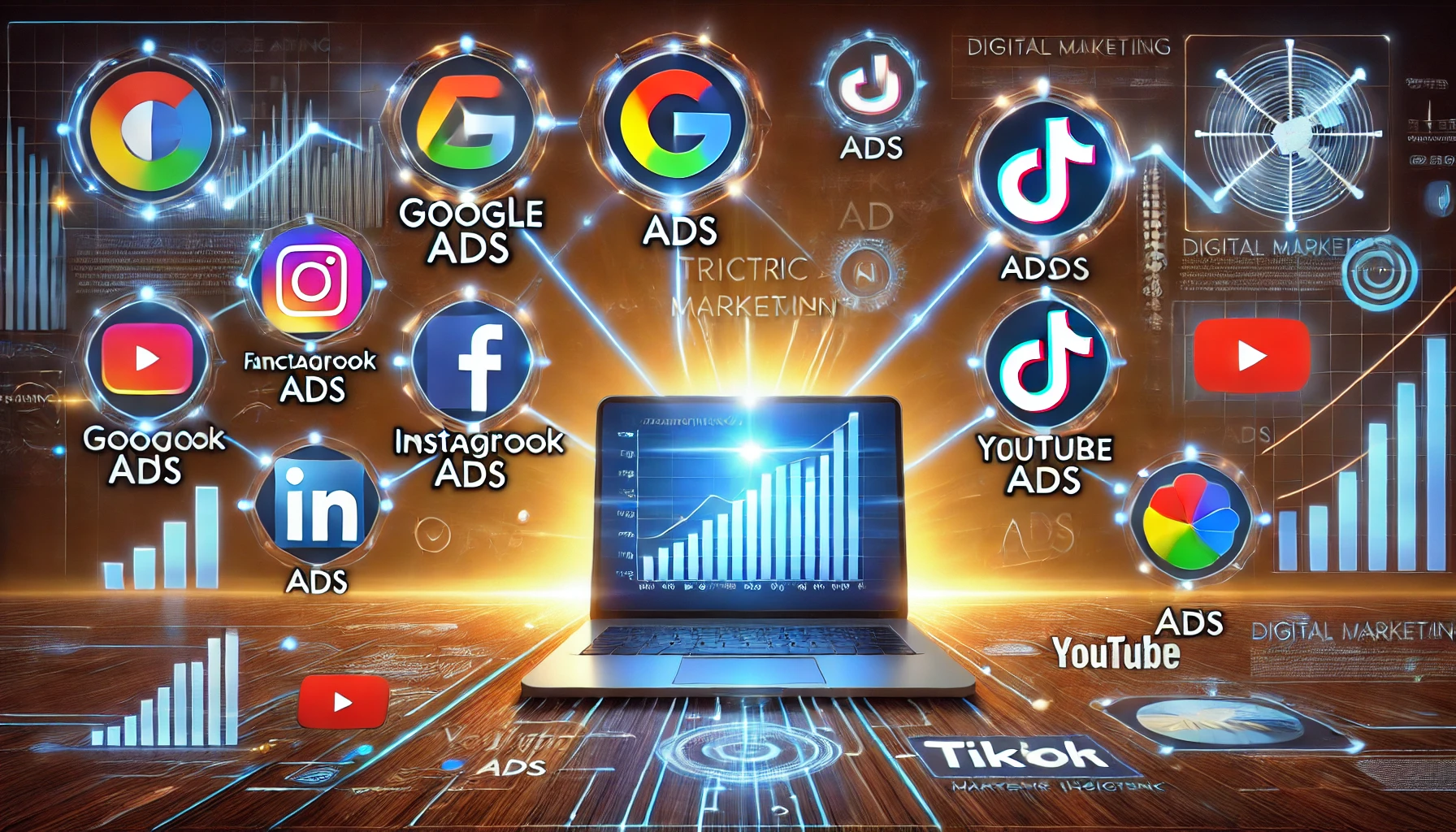With so many digital advertising options available, businesses must choose the right traffic management platforms to maximize their reach and budget. The two biggest players in the industry, Google Ads and Facebook Ads, dominate the online advertising space, but there are other powerful platforms worth considering.
This article explores the top platforms for managing website traffic, how they work, and when to use each one for the best results.
1. Google Ads – The Power of Search & Display
Google Ads is one of the most effective and widely used advertising platforms. Since Google is the largest search engine in the world, it allows businesses to target users based on their search queries.
How Google Ads Works
Google Ads operates on a Pay-Per-Click (PPC) model, meaning advertisers bid on specific keywords to show their ads in search results or on partner websites.
Google Ads Campaign Types
- Search Ads – Text-based ads that appear in Google search results when users look for related keywords.
- Display Ads – Visual banner ads shown on Google’s partner sites across the internet.
- Shopping Ads – Product-based ads that display in Google Shopping results.
- YouTube Ads – Video ads that run before, during, or after YouTube videos.
- App Promotion Ads – Ads designed to increase mobile app downloads.
When to Use Google Ads?
Best for businesses that want high-intent traffic.
Works well for e-commerce, service-based businesses, and local businesses.
Ideal for targeting people actively searching for products or services.
Pros and Cons of Google Ads
Pros:
Massive reach – Billions of searches per day.
Highly targeted – Ads appear based on user intent.
Multiple ad formats – Search, display, video, and more.
Cons:
Can be expensive – Competitive keywords have high costs.
Requires optimization – Must continuously monitor ad performance.
2. Facebook Ads – Social Media Targeting
Facebook Ads is the largest social media advertising platform, allowing businesses to reach users based on their demographics, interests, and behaviors. Since Facebook owns Instagram, ads can also appear on both platforms simultaneously.
How Facebook Ads Works
Facebook Ads uses a targeted advertising approach, where businesses can define their ideal audience by selecting:
- Age, gender, location
- Interests and hobbies
- Online behavior (e.g., previous website visits)
- Custom and lookalike audiences
Types of Facebook Ads
- Image & Video Ads – Appear in Facebook and Instagram feeds.
- Carousel Ads – Show multiple images or products in a single ad.
- Stories Ads – Full-screen ads that appear in Facebook & Instagram Stories.
- Messenger Ads – Ads that open direct conversations in Messenger.
- Lead Generation Ads – Collect emails and phone numbers from users.
When to Use Facebook Ads?
Best for businesses looking to reach new audiences.
Great for building brand awareness and engagement.
Works well for e-commerce, coaching, and digital products.
Pros and Cons of Facebook Ads
Pros:
Advanced targeting options – Can reach highly specific audiences.
Affordable for small businesses – Lower cost-per-click than Google Ads.
High engagement potential – Works well for visual and video ads.
Cons:
Less buyer intent – Users may not be actively searching for products.
Frequent algorithm changes – Can impact ad performance.
3. Instagram Ads – Visual & Influencer Marketing
Since Instagram is owned by Facebook, Instagram Ads operate within the Facebook Ads Manager, allowing advertisers to target users based on the same detailed criteria.
Best for:
Fashion, beauty, food, travel, and lifestyle brands.
E-commerce businesses targeting younger audiences.
Influencer marketing and brand collaborations.
4. YouTube Ads – Video Advertising Powerhouse
YouTube Ads, managed through Google Ads, allow businesses to run video-based ads before or during YouTube content. Since YouTube is the second-largest search engine, ads can be targeted based on keywords, demographics, and interests.
Types of YouTube Ads
- Skippable In-Stream Ads – Play before, during, or after a video and can be skipped after 5 seconds.
- Non-Skippable Ads – Short ads (up to 15 seconds) that viewers must watch before continuing.
- Bumper Ads – Quick, 6-second ads designed for brand awareness.
- Overlay Ads – Small banner ads appearing over a video.
Best for:
Brands with strong video content.
Businesses wanting to educate or entertain their audience.
High-ticket offers that require visual storytelling.
5. TikTok Ads – Reaching Younger Audiences
The TikTok Ads have grown in popularity, allowing businesses to create short-form video content to engage younger audiences. TikTok uses a native ad format, making ads feel like organic content.
Best for:
Brands targeting Gen Z and Millennials.
E-commerce businesses using viral trends.
Product demonstrations and influencer collaborations.
6. LinkedIn Ads – B2B Marketing Solutions
LinkedIn Ads are the best choice for business-to-business (B2B) marketing. They allow businesses to target professionals based on:
- Industry
- Job title & seniority
- Company size
- Skills & interests
Best for:
B2B companies selling services or software.
Recruiting and job-related advertising.
Professional coaching and consulting businesses.
Choosing the Best Platform for Your Business
| Platform | Best For | Cost | User Intent |
|---|---|---|---|
| Google Ads | High-intent searches | $$$ | High |
| Facebook Ads | Brand awareness & engagement | $$ | Medium |
| Instagram Ads | Visual-based businesses | $$ | Medium |
| YouTube Ads | Video marketing & education | $$ | Medium-High |
| TikTok Ads | Viral, trend-based products | $ | Low-Medium |
| LinkedIn Ads | B2B & professional marketing | $$$ | High |
Final Thoughts
Choosing the right traffic management platform depends on your business goals, budget, and audience. Google Ads is best for high-intent search traffic, while Facebook and Instagram Ads are ideal for social media engagement. YouTube and TikTok Ads work well for video content, and LinkedIn Ads are perfect for B2B marketing.
For maximum success, businesses should combine multiple platforms to diversify traffic sources and improve marketing results.
Which platform will you focus on for your next campaign?

